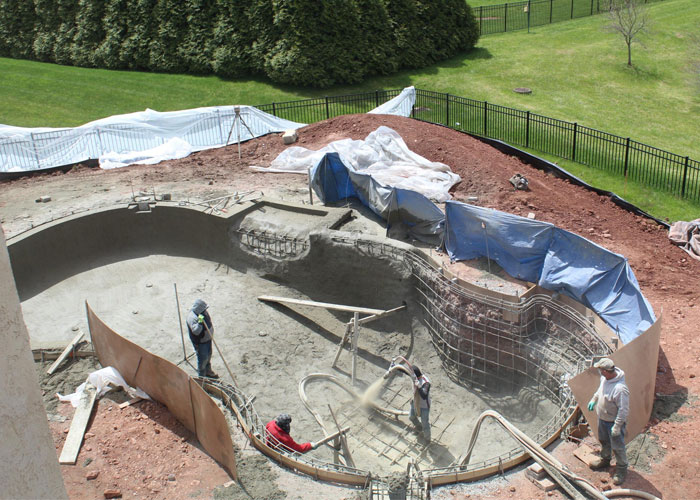Swimming Pools
Swimming pools transform ordinary backyards into personal retreats for relaxation, exercise, and entertainment. They offer year-round fitness opportunities, increase property value, and create the perfect space for family gatherings and social events.
Essential Design Considerations
Size and Shape: Rectangular pools maximize swimming space for laps, while freeform designs complement natural landscapes. Standard residential pools range from 12×24 feet to 20×40 feet.
Location: Position pools to receive 6-8 hours of daily sunlight, protect from prevailing winds, and ensure privacy. Allow 4-6 feet of deck space around the pool.
Depth: Shallow ends typically 3 feet, deep ends up to 8 feet for diving.
Key Pool Systems
Filtration
Sand Filters: Most common and affordable, easy to maintain. Cartridge Filters: Superior filtration for smaller pools, no backwashing required. DE Filters: Finest filtration for crystal-clear water, requires more maintenance.
Heating Options
Gas Heaters: Rapid heating, ideal for occasional use. Heat Pumps: Energy-efficient for consistent heating needs. Solar Heating: Environmentally friendly and cost-effective long-term.
Pool Maintenance Essentials
Chemical Balance (Test Weekly)
- pH: 7.2-7.6 for optimal comfort and chlorine effectiveness
- Chlorine: 1.0-3.0 ppm to kill bacteria and algae
- Total Alkalinity: 80-120 ppm as pH buffer
- Calcium Hardness: 150-300 ppm to prevent equipment damage
Regular Cleaning
- Daily: Skim surface debris
- Weekly: Brush walls and floor, vacuum settled debris
- Monthly: Clean or replace filters
- Seasonally: Professional deep cleaning and equipment inspection
Safety Requirements
- Fencing: 4-foot minimum height with self-closing gates
- Pool Covers: Safety covers provide additional protection
- GFCI Protection: Prevents electrical shock
- Emergency Equipment: Keep rescue tools and first aid supplies poolside
Modern Pool Technology
Smart Controllers: Automatically monitor and adjust chemical levels, temperature, and filtration.
Mobile Apps: Control pool systems remotely from smartphones.
LED Lighting: Energy-efficient with color-changing capabilities.
Saltwater Systems: Generate chlorine from salt, reducing chemical storage needs.
Environmental Considerations
Pool Covers: Reduce evaporation by 90%, conserve water and chemicals.
Variable-Speed Pumps: Significantly reduce energy consumption.
Solar Power: Use solar panels to power pool equipment and heating.
Planning Your Pool Project
Before You Start
- Site Assessment: Check soil conditions, drainage, and utilities
- Permits: Obtain building permits and ensure code compliance
- Professional Design: Work with qualified contractors
- Timeline: In-ground pools take 6-12 weeks, above-ground pools 1-3 days
Key Success Factors
- Plan for long-term maintenance costs
- Prioritize safety features from the start
- Consider energy-efficient equipment
- Allow adequate space for decking and landscaping

